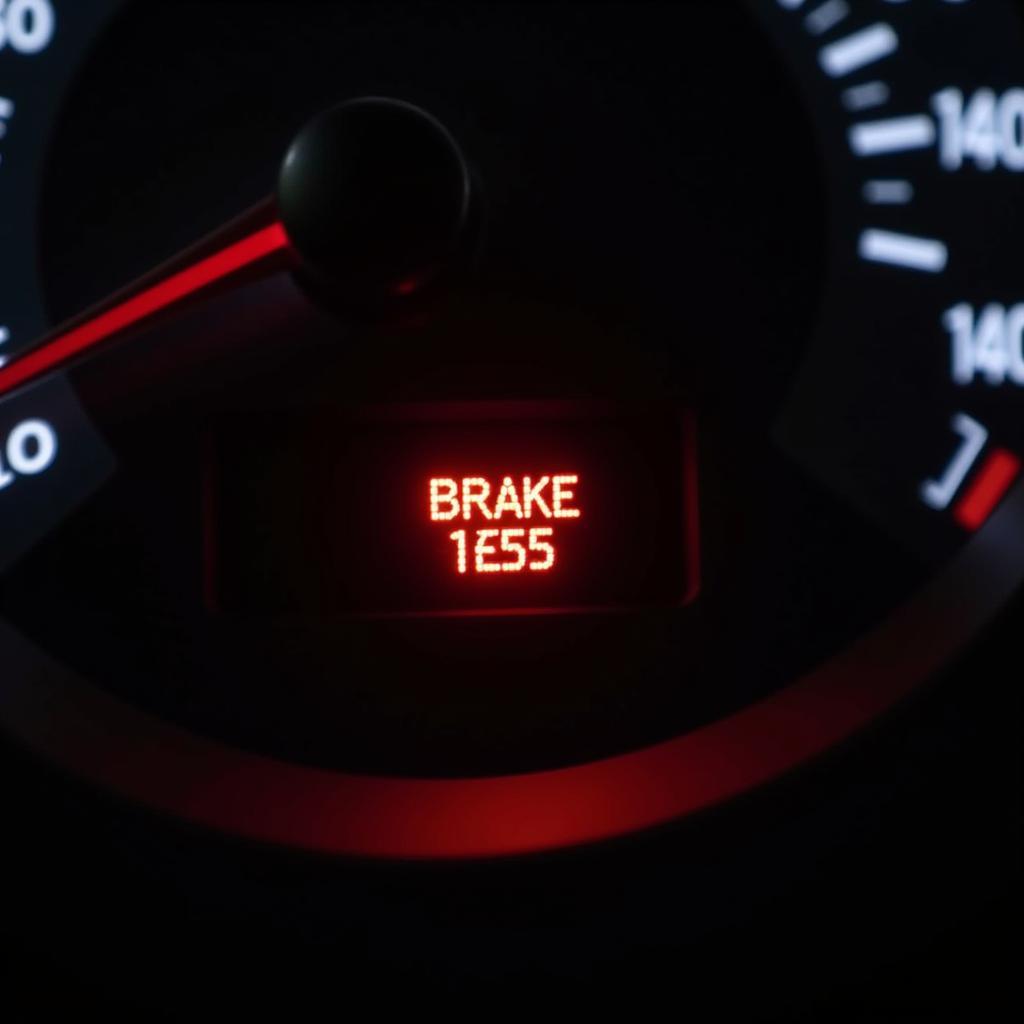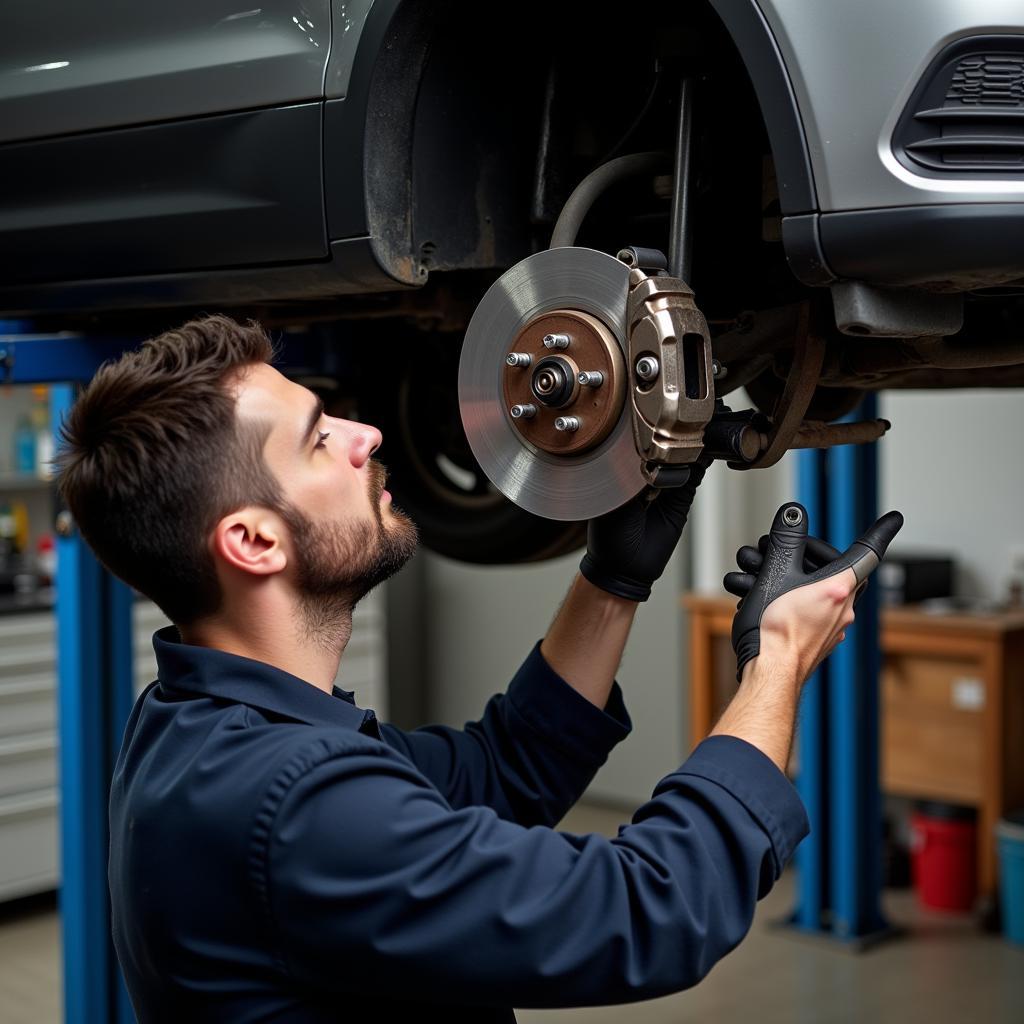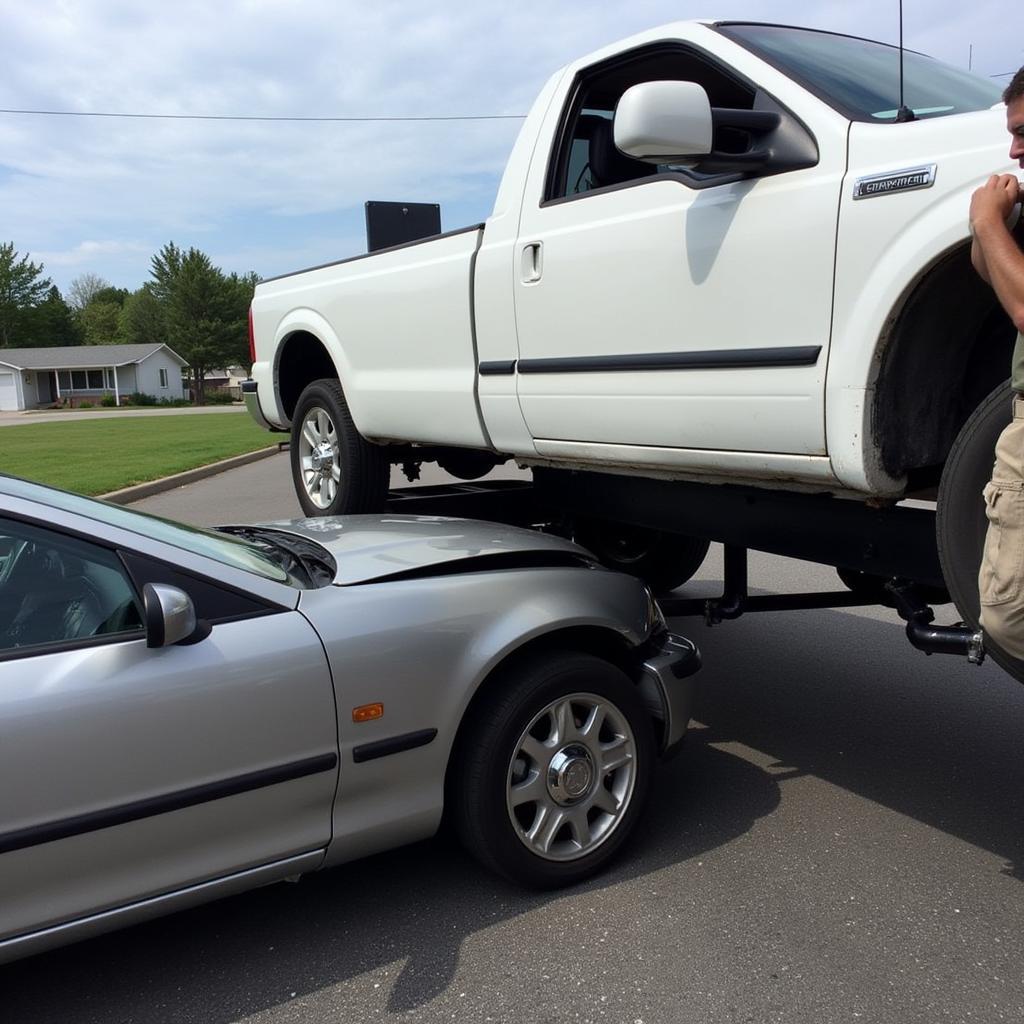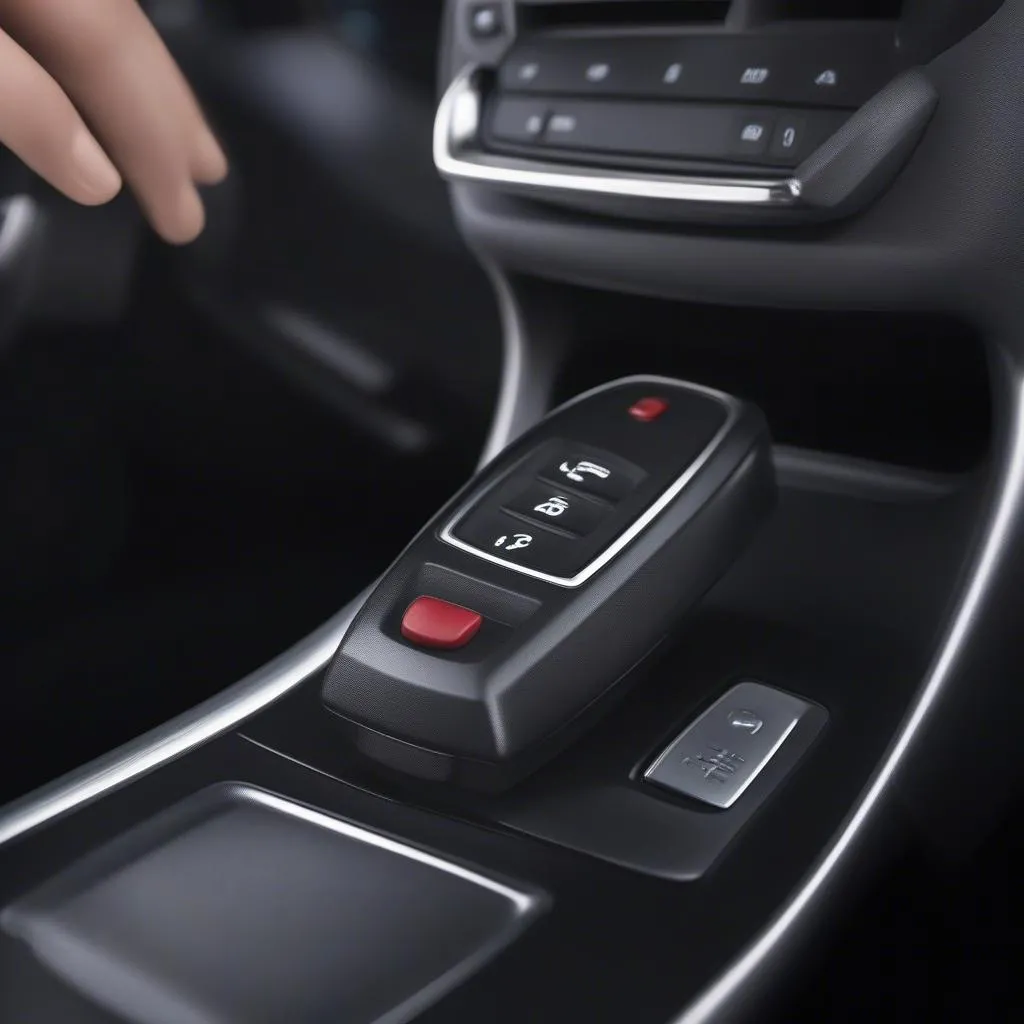A flashing car brake warning light is a nerve-wracking sight for any driver. It’s a clear signal that something isn’t right with your vehicle’s braking system, demanding your immediate attention. Ignoring this warning could compromise your safety and that of other road users. This comprehensive guide will delve into the common causes of a flashing brake warning light, explain possible solutions, and provide essential tips to handle this situation effectively.
 Car Dashboard Showing Flashing Brake Warning Light
Car Dashboard Showing Flashing Brake Warning Light
Understanding Your Car’s Brake Warning System
Modern cars have sophisticated brake warning systems designed to alert you about potential issues. The brake warning light typically illuminates in red or orange when there’s a problem. A steady light usually indicates low brake fluid, which can often be addressed with a top-up. However, a flashing brake warning light usually signals a more serious problem that requires immediate attention.
Common Causes of a Flashing Brake Warning Light
Several factors can trigger a flashing brake warning light. These include:
- Worn Brake Pads: Your brake pads are designed to wear down over time. If they wear too thin, it can trigger the warning light.
- Faulty ABS System: The Anti-lock Braking System (ABS) prevents your wheels from locking up during hard braking. A malfunction within the ABS module, wheel speed sensors, or wiring can cause the light to flash.
- Low or Leaking Brake Fluid: Brake fluid is the lifeblood of your car’s braking system. If the fluid level is critically low due to a leak, the warning light will flash.
- Defective Brake Light Switch: A malfunctioning brake light switch might not only affect your brake lights but also trigger the warning light.
- Issues with the Electronic Brake-force Distribution System (EBD): The EBD system works in conjunction with your ABS to distribute braking force evenly across all four wheels. Problems with the EBD can also trigger the warning light.
 Mechanic Inspecting Brakes of a Car on a Lift
Mechanic Inspecting Brakes of a Car on a Lift
What to Do When Your Brake Warning Light Flashes
Experiencing a flashing brake warning light can be stressful, but it’s crucial to remain calm and take immediate action:
- Reduce Speed and Find a Safe Place to Stop: If possible, gradually slow down and pull over to a safe location away from traffic.
- Check Your Brake Fluid Level: With the engine off, locate the brake fluid reservoir under the hood and check the fluid level. Refer to your owner’s manual for its location and the recommended fluid type.
- Avoid Driving Further If Possible: If you notice low brake fluid or any signs of leakage, avoid driving your car. Driving with low brake fluid can severely compromise your ability to stop the vehicle safely.
- Contact a Qualified Mechanic Immediately: Whether you identify a potential cause or not, it’s crucial to have your car diagnosed by a professional mechanic as soon as possible.
Can You Drive with a Flashing Brake Warning Light?
Driving with a flashing brake warning light is extremely risky. It indicates a potentially serious problem with your brakes, and continuing to drive could lead to brake failure.
 Tow Truck Assisting a Disabled Vehicle with Brake Issues
Tow Truck Assisting a Disabled Vehicle with Brake Issues
Diagnosing and Fixing the Problem
A qualified mechanic will use specialized diagnostic tools to pinpoint the exact cause of the flashing brake warning light. They will:
- Scan for Trouble Codes: Using a diagnostic scanner, the mechanic can read trouble codes stored in your car’s computer, which provide valuable clues about the problem.
- Inspect Brake Components: A thorough visual inspection of brake pads, rotors, calipers, brake lines, and other components will help identify any visible damage, wear, or leaks.
- Test the ABS System: The mechanic will test the functionality of your ABS system, including the wheel speed sensors and the ABS module.
Preventing Future Brake Warning Light Issues
Taking preventative measures can help avoid future issues with your car’s braking system:
- Regular Brake Inspections: Adhere to your car manufacturer’s recommended maintenance schedule for brake inspections.
- Timely Brake Pad Replacement: Don’t wait for your brake pads to wear down completely. Replace them as soon as they reach the minimum thickness specified by the manufacturer.
- Quality Brake Fluid: Use high-quality brake fluid and have it flushed and replaced according to your car’s maintenance schedule.
- Address Warning Lights Promptly: Never ignore any warning lights related to your braking system. Early detection and repair are essential for safe driving.
Conclusion
A flashing brake warning light is a serious matter that requires immediate attention. By understanding its potential causes and taking prompt action, you can ensure your safety on the road and prevent costly repairs. Remember, regular maintenance and timely inspections are key to keeping your braking system in optimal condition.


